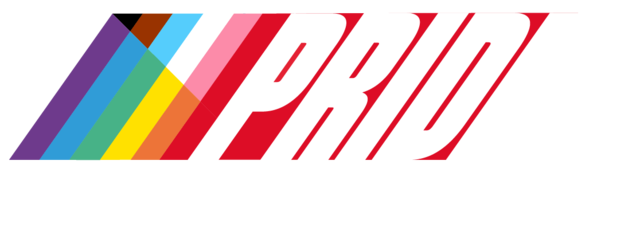

The Smart Space: Where Innovation Meets Reality
Smart Workplace Design Trends: Creating Spaces for the Future.
In this fourth edition of our workplace design trends series, we explore the concept of creating smart spaces—environments that support, elevate, and enhance work practices through intelligent integration of technology, operations, design and super-tech. A smart space is more than just a collection of gadgets; it’s a thoughtfully designed ecosystem that boosts productivity, supports well-being, and provides flexibility for evolving business needs. In today’s competitive landscape, understanding how to design and implement these smart environments is key for any business leader or manager looking to optimise their workplace.
Technology: The Backbone of Smart Spaces
Smart spaces are defined by their seamless integration of technology, which enables employees to work efficiently and effectively. It’s not just about having the latest tech gadgets; it’s about ensuring that these tools enhance user experience and streamline operations. How often have you entered a meeting room only to spend the first 10 minutes struggling with connectivity issues? Technology should work effortlessly to support your team, not hinder them. Other options for consideration include:
- AI-Powered Meeting Rooms: These spaces come equipped with AI tools for scheduling, voice recognition, and automated note-taking, ensuring meetings are efficient and productive.
- IoT-Integrated Workstations: The Internet of Things (IoT) connects devices and systems, allowing personalised settings such as adjustable desk heights and climate control to enhance employee comfort and productivity.
- Hybrid Work Tools: Implement solutions like collaboration software and cloud-based project management platforms to support both in-office and remote workers, ensuring a seamless experience regardless of location.
- Occupancy Sensors: Integrating occupancy sensors helps track workspace usage and optimise layouts. These sensors provide data on how often spaces are used, helping facilities managers make informed decisions about right-sizing, security, and resource management.
Additional Smart Technologies:
- Digital Signage: Provides real-time updates on room availability, company announcements, and wayfinding, enhancing communication and efficiency.
- Smart Lockers: Secure storage solutions for personal items and deliveries, promoting a clutter-free workspace.
“The best technology is invisible—it simply gets out of the way and lets you do your best work.” – Jason Fried, Co-founder of Basecamp
Operations: Optimising Comfort and Performance
Operational efficiency in a smart space means creating an environment that maximises comfort, performance, and sustainability. This involves leveraging intelligent systems that optimise climate control, lighting, and energy management, contributing to a healthier and more productive workspace.
- Smart Climate Control and Lighting: These systems create a comfortable environment by automatically adjusting temperature and lighting based on occupancy and time of day. According to a study by the World Green Building Council, employees in well-lit, temperature-controlled environments report a 25% increase in productivity and satisfaction.
- Sustainability Initiatives: Implementing energy-efficient technologies and sustainable materials reduces environmental impact and operational costs. A study by the Harvard Business Review found that green buildings can lead to a 20% reduction in energy use, benefitting both the organisation and individual employees by reducing utility costs and promoting health.
- Energy Management Systems: Utilise tools to monitor and reduce energy consumption, promoting sustainability and cost savings. Smart meters and automated systems can track energy usage and provide insights for optimisation.
- Dynamic Space Management: Continuously adapt workspace configurations based on real-time data to meet changing needs and improve space utilisation.
Efficient operations are the foundation of a successful business. By integrating smart systems, we can create spaces that work as hard as we do.” – World Green Building Council
Design: Flexibility and Adaptability
Designing a smart office involves creating spaces that are flexible, adaptive, and prepared for future growth. This means thinking beyond current needs and considering how spaces can evolve to meet changing demands.
Enhanced productivity is one major advantage to a smart space. Intelligent systems streamline workflows and reduce downtime, allowing employees to focus on what truly matters. For instance, Deloitte’s study shows that smart office technology can boost productivity by up to 15%.
- Flexible Workspace Designs: Create adaptable spaces that transition easily between different functions, such as quiet work areas, collaborative zones, and breakout spaces. This flexibility supports diverse work styles and activities, enhancing overall productivity.
- Scalable and Modular Designs: Ensure your office can accommodate future technological advancements and business growth. A study by JLL indicates that companies with flexible office spaces maintain a competitive advantage and can better adapt to market changes.
- Future-Proofing: Design with scalability in mind, allowing for easy updates and expansions to accommodate new technologies and growing teams. This approach ensures your workspace remains relevant and functional as your business evolves.
- Workspace Booking Solutions: Implement desk and meeting room booking systems to manage flexible work arrangements and optimise space usage.
- Acoustic Design:** Incorporate soundproofing and acoustic treatments to create a comfortable and low-distraction environment.
“The best office designs are those that grow with your business, adapting to new challenges and opportunities.” – JLL Workplace Report
Super Tech: The Future of Smart Workspaces
The future of office design lies in super tech innovations that leverage AI, VR, and AR to create efficient, intuitive, and immersive work environments. These technologies provide businesses with powerful tools to enhance employee experience and optimise operations.
- AI and Automation: Smart building systems use AI to optimise energy usage, lighting, heating, and cooling systems, creating more sustainable and cost-efficient workspaces.
- Virtual Reality (VR): Use VR tools to visualise and plan office layouts before implementation, ensuring the space meets functional and aesthetic needs. Businesses can also use VR for virtual tours, training, and remote collaboration.
- Augmented Reality (AR) Applications: Implement AR for real-time troubleshooting and maintenance guidance, as well as for immersive training experiences.
- Predictive Maintenance: AI-powered systems predict and prevent equipment failures, ensuring a smooth and uninterrupted working environment. This proactive approach reduces downtime and maintenance costs.
Here’s some practical application ideas:
- Smart Lighting Systems: Automated lighting that adjusts based on occupancy and natural light to enhance comfort and reduce energy costs.
- IoT-Integrated Workstations: Desks and workspaces equipped with IoT devices for personalised settings, such as adjustable heights and climate control.
- AI-Powered Meeting Rooms: Meeting rooms with AI tools for scheduling, voice recognition, and automated note-taking.
- Virtual Reality (VR) Design Planning: VR tools for visualising and planning office layouts before implementation.
- Augmented Reality (AR) Maintenance Support: AR applications for real-time troubleshooting and maintenance guidance.
- Smart Security Systems: Advanced security systems with facial recognition, remote monitoring, and automated access control.
- Hybrid Work Tools: Solutions for seamless remote work integration, including collaboration software and cloud-based project management.
- Automated Cleaning Systems: Robotics and automated systems for maintaining cleanliness and hygiene in the workplace.
- Occupancy Sensors: Devices that monitor space utilization and optimize office layouts for efficiency.
- Energy Management Systems: Tools to monitor and reduce energy consumption, promoting sustainability and cost savings.
The Smart Space: Ready to Enhance Your Workspace?
At Spaceworks, we understand the importance of creating a work environment that not only meets functional needs but also embraces the latest technology. Whether you’re looking to implement cutting-edge designs or find budget-friendly solutions, our team is here to help you transform your workspace into a place where your employees can thrive.
Reach out to our commercial specialist, Jana Stringer, to explore how we can tailor our services to meet your specific needs and budget. Jana is ready to guide you through the process and help you create a smart workspace that inspires productivity and innovation.
Jana Stringer
Tel: 021 153 3408
Email: jana@spaceworks.co.nz
Let’s work together to design a space that empowers your team and drives success. Get in touch now to start your journey toward a smarter, more efficient workplace.





